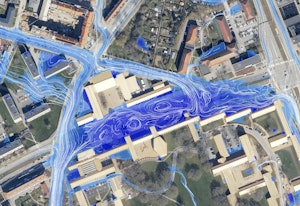Pour bien démarrer
Vidéos introductives
Regardez ces courtes vidéos introductives pour obtenir un bon aperçu des outils et des analyses de Scalgo Live.


Analyses and tools
Explore the core features of Scalgo Live. Learn to navigate the map, and how to work faster with ready-made surface water analyses and interactive tools.
- 8 vidéos

Workspaces
Create your project and learn how to use the terrain editing tools and alter land cover. Assess the impact of your changes on surface water behaviour.
- 5 vidéos

Hydrodynamic modelling
Dive into hydrodynamic flood simulations and launch your own simulations with DynamicFlood. Master result interpretation and unleash the power of 2D surface flow simulations.
- 3 vidéos

NatureInsight
Explore how to map and model nature-based solutions across Great Britain using pre-computed calculations for instant, customisable insights.
- 3 vidéos